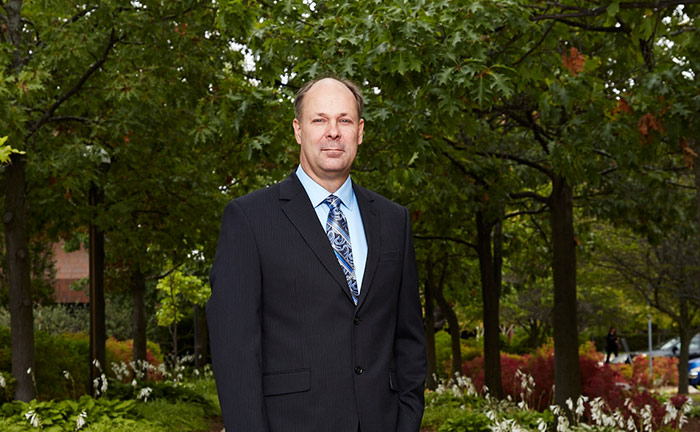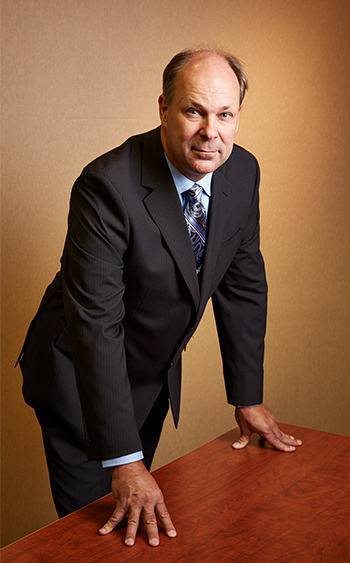Asset growth & protection: What HNW clients want
Asset growth & protection: What HNW clients want

Robert Kinnun • Midland, Michigan
Madison Avenue Securities, Inc.
Whether a high-net-worth client is focused on charitable giving or leaving a family legacy, moving assets into active strategies makes sense.
Proactive Advisor Magazine: Rob, how do you differentiate your practice?
I am based in Midland, Michigan, a relatively affluent area of Michigan. It is a great city with a healthy business community and a commitment to the arts, civic responsibility, and charitable outreach. I have focused my advisory work on higher-net-worth clients with some complex planning and estate needs. Most of my referrals come through attorneys and CPAs, as they know I can handle the most challenging and complicated planning issues.

What are some specific issues facing this type of client?
The obvious ones are managing wealth across generations, handling planning for charitable donations and foundations, and providing for smart business transitions. But the needs of high-net-worth clients are really no different than those of any other client: to protect and grow assets.
We need to make sure that programs are in place to manage the unfortunate events of life such as disability, death, and divorce, being mindful of tax implications. And we need to make sure clients are well-informed about their financial state of health and fully understand the objectives and strategies that we have agreed upon. I have always believed in client education and full disclosure of everything I do on behalf of clients.
“Third-party managers give me the ability to accommodate my clients no matter their life circumstances or outlook on risk.”
As it relates to protecting and growing assets, what is your broad investment philosophy?
Pretty early on, even before the popularity of modern portfolio theory (MPT), I was in the camp of strong diversification for an investment portfolio. But I have learned over time that many elements of MPT just do not go far enough or account for changes in the environment—there are so many factors and new investment choices to consider today. MPT is fine in theory, but in practicality is not always able to handle all the variables, risk issues, and the potential emotional behaviors of clients.
How did your thinking evolve?
It has been a process over the years, always looking to optimize portfolio diversification and performance while having a strong measure of risk management. I now utilize third-party active money managers who can go several steps beyond the first few generations of portfolio optimization. They have the ability to be very responsive to market conditions—to go to 100% cash for example, or to add or remove asset classes, or to use leverage, or to employ various hedging techniques.
Some would argue that going to cash is a very conservative action. I would argue just the opposite—it is a very aggressive and active move that is predicated on a technically based model indicating that the investment environment has changed significantly. That to me is active management, not passive. It goes way beyond just adjusting some allocation percentages or rebalancing the portfolio. This requires clearly communicating to clients what they might expect under different market conditions—what actions their portfolios might take based on bearish or bullish conditions.
How do you educate clients around actively managed investment strategies?
 It is an interesting paradigm. I am using some of the most sophisticated quantitative strategies out there for clients, but I still start the process with an old-fashioned yellow pad and pencil. I want to truly understand who the client is first, what is most important to them in life, and their family circumstances. There is plenty of time to drill down into the specifics of their financial lives, but the entire process becomes much easier and more valuable by first making that personal connection.
It is an interesting paradigm. I am using some of the most sophisticated quantitative strategies out there for clients, but I still start the process with an old-fashioned yellow pad and pencil. I want to truly understand who the client is first, what is most important to them in life, and their family circumstances. There is plenty of time to drill down into the specifics of their financial lives, but the entire process becomes much easier and more valuable by first making that personal connection.
Each family has different situations; there is no cookie-cutter approach. That said, active investment management, with its focus on managing risk first, can work for virtually all of my clients. I have one widowed female client, for example, who is holding a substantial amount of physical gold. She is very wary of the stock market. I am not necessarily going to recommend that she sell her gold, but for her other assets, active management can provide a way for her to enhance her returns while providing some reassurance that defensive strategies will be in place for the next big market downturn. Though it has been a long process educating her on risk concepts, she is slowly introducing some conservative active strategies into her portfolio.
I have another client family on the opposite side of the spectrum. They have very ambitious charitable giving objectives over the long term. They are perfectly suited to be under the active money management umbrella, but with a more aggressive, growth-oriented risk profile than the first example.
That is one of the real benefits of the third-party managers I use—having the ability to accommodate my clients no matter their life circumstances or outlook on risk. These strategies are a component of a broader financial plan that has to cover a variety of objectives, but it can be a very important component. I have a growing percentage of client assets moving into active strategies.
The key to everything I do for clients is the education process. Clients have to understand exactly what we are doing in terms that are understandable from a non-professional’s point of view. They need to understand what the risks are, what the benefits are, and where the trade-offs lie. I always explain the parameters of worst-case scenarios and how they might be managed.
With virtually all of my high-net-worth clients wanting and needing both asset growth and asset protection, active investment management is a very logical part of the solution.
Disclosure: Robert Kinnun is a registered representative of and offers securities through Madison Avenue Securities, Inc. (“MAS”), member FINRA & SIPC, a registered investment advisor.
Photography by Brad Ziegler

